Common Dog Fears and Phobias and How to Help Treat Them?

Experiencing fear is natural and common for all dogs. A fight-or-flight response is essential for keeping dogs safe in various circumstances. For example, fear can make a dog run away to escape a potentially life-threatening situation.
However, fear can lead to a declining quality of life when it becomes a persistent emotion. In extreme cases, dogs can develop pathological phobias that influence many aspects of their daily routine, such as outside walks or vet visits.
The good news is you can help your dog overcome fears and phobias. Keep reading to learn more.
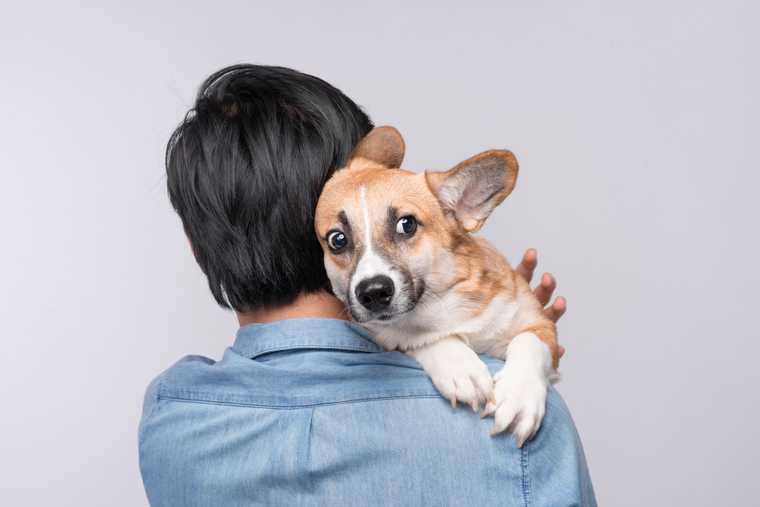
The signs your dog is afraid of something:
-
Avoiding a particular object, person or place
-
Freezing and trembling
-
Averting eye contact and dilated pupils
-
Lip-licking or yawning
-
Panting when the dog isn’t thirsty
-
Pacing
-
Lying down on the ground
-
Refusing to eat food
What Are Dogs Most Afraid of?
Being fearful is a natural response for dogs that has kept them alive throughout evolution. So, fear isn’t wrong, per se. However, some dogs are more genetically predisposed to experience anxiety or suffer from phobias that can persist over prolonged periods.
Let’s review some typical things that scare dogs.
1. Noise and Thunderstorm Phobia
Fireworks and thunder are the most common causes of noise phobias, but dogs can develop a phobia of any sound.
Dogs can become fearful of a sound after a specific event, such as hearing fireworks during a New Year’s celebration. However, they can also become afraid of a sound after multiple exposures to it, and the fear develops gradually; for example, when a dog is scared of thunderstorms, they become more fearful during the thunderstorm season.
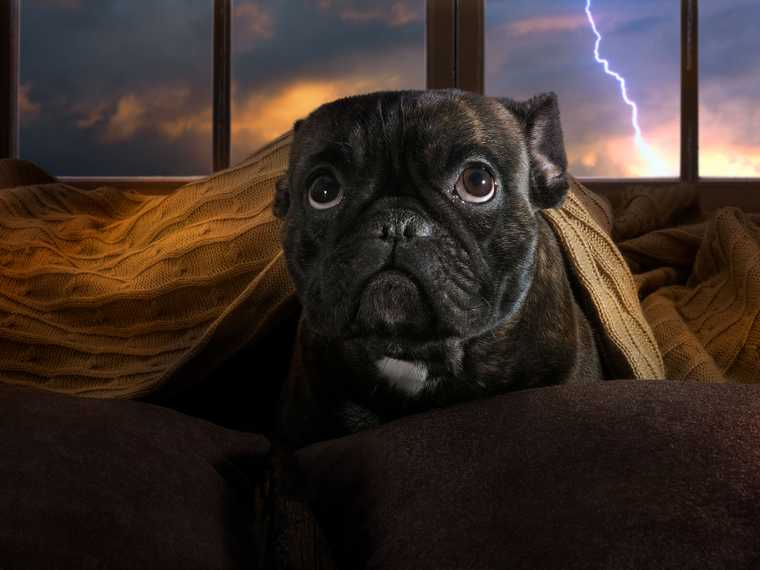
Noise and thunderstorm phobia is complex because it encompasses sound, changes in barometric pressures, darkening skies, lightning flashes, and rain and wind.
2. Separation Anxiety
Separation anxiety affects about 20% to 25% of dogs. Dogs with this problem show signs through voiding in the house, chewing furniture, and persistently barking when alone. They may have been through a traumatic experience when they were alone or have been abandoned in a shelter by previous owners.
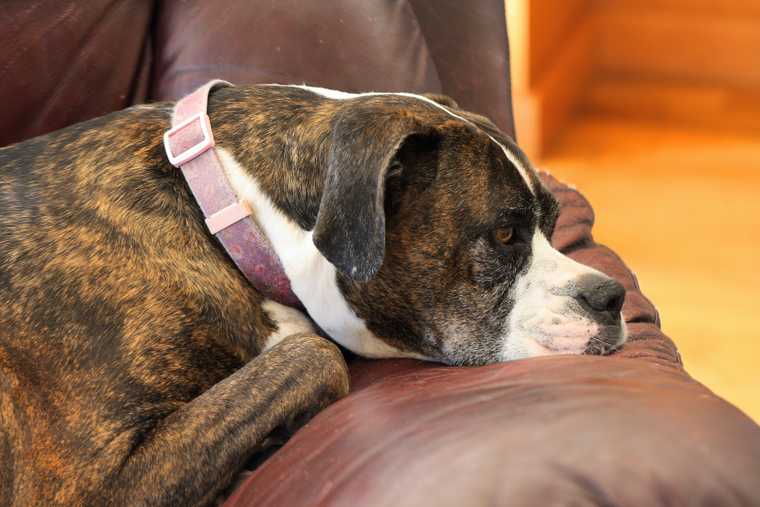
3. Fear of Other Animals
Typically, dogs develop a fear of other animals when they’ve been attacked by one or if they’ve had a negative experience when meeting animals.
If they’ve been attacked, this fear may manifest only when they see an animal of that species or breed, or they may generalize the fear to all animals. More typical signs of anxiety in this situation are trembling, excessive panting, running away and whining, but a fearful dog may become aggressive in the presence of strange animals. Some of them develop reactivity (barking or lunging), which may be confused with aggressive behavior.
4. Fear of Places
This is a common fear when dogs don't get out much, for example, dogs that only leave the house to go to the vet. The problem may also develop after your doggy pal has had a negative experience and associates the experience with the place.
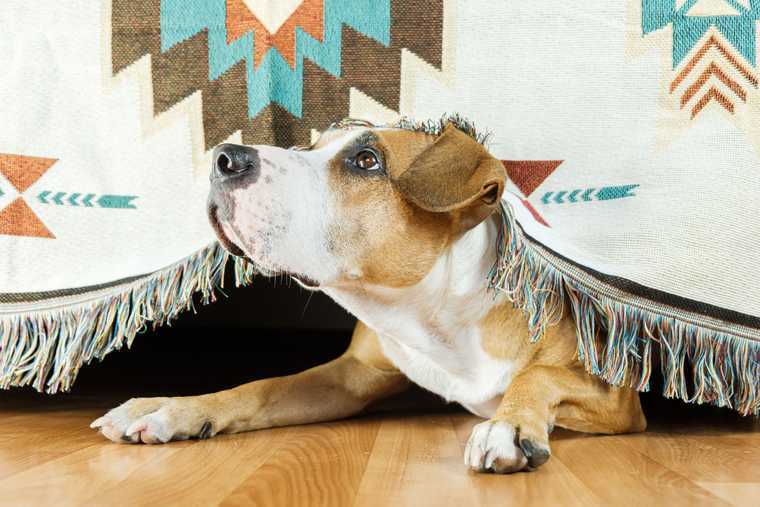
To prevent it in puppies, you should gradually introduce them to various places with different noises, smells, people, and animals during socialization. Even if your dog seems to be having a good experience in the place, beware of signs of stress. Don’t hesitate to remove your dog from the place if they’re uncomfortable.
Get more tips for fisrt time dog owners
5. Fear of Objects
Any object that frightens your dog can become an object of fear to them, and it can be for various reasons. Most dogs don’t feel safe around the items, producing intense noise. Thus, many dogs stay away from vacuum cleaners or hair dryers.
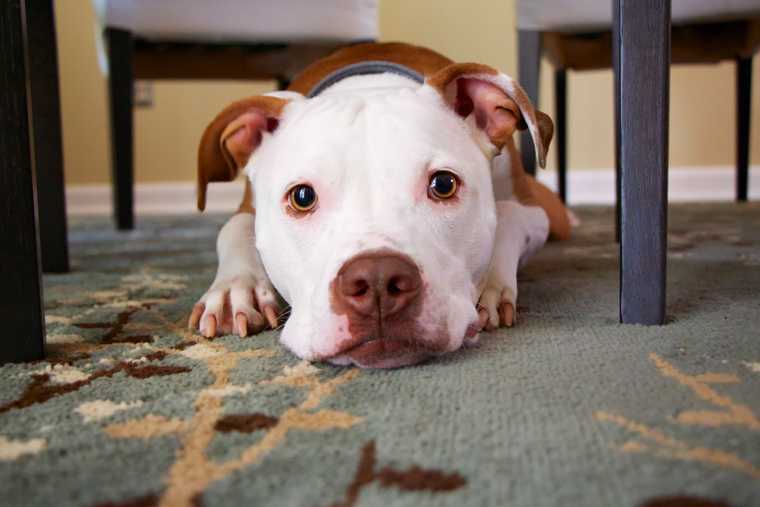
However, sometimes dogs show signs of stress when they face typical household items such as a broom, a trash bag, or a hat. Such a fear response is often related to previous negative experiences connected with the objects. The same applies to items misused during dog training, like a leash or a crate.
In some cases, dogs feel fearful around the things they’re unfamiliar with. For example, seeing a wheelchair or walking sticks can be unusual and scary for some dogs.
6. Fear of Vets
Some dogs experience intense fear of vet visits connected to previous medical procedures. Dogs can’t understand the importance of vet visits and your noble intent behind them. In addition, they feel stressed because they’re going to a new place and are exposed to various smells. Combined with feeling sick and a car ride, the vet visits can become quite stressful for a dog.
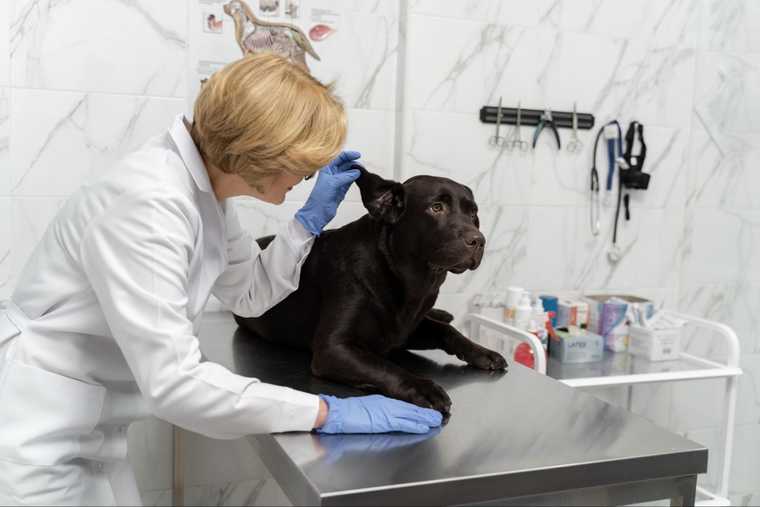
Luckily, we can desensitize vet visits by using highly valuable treats when going there, walking the dog in the surroundings of the clinic, requesting the vet to let the dog sniff the consulting room, giving them a few treats before doing the physical examination, and taking the dog to the vet just to see the vets and develop a positive association between consultations.
7. Fear of Strangers
It is common for dogs rescued from abusive environments, a fear of strangers can have different forms. Some dogs fear any person they don’t know. Others may dislike a specific category of people (often because of previous negative experiences), such as men or people wearing hats.
8. Fear of Kids
The fear typically occurs due to the lack of exposure to children from a young age or because of previous negative experiences related to kids. Let’s face it: children are often loud, energetic, and unpredictable. Their erratic, fearful behavior can be too much for a dog to handle, so some may need your assistance adjusting to the household's younger members.
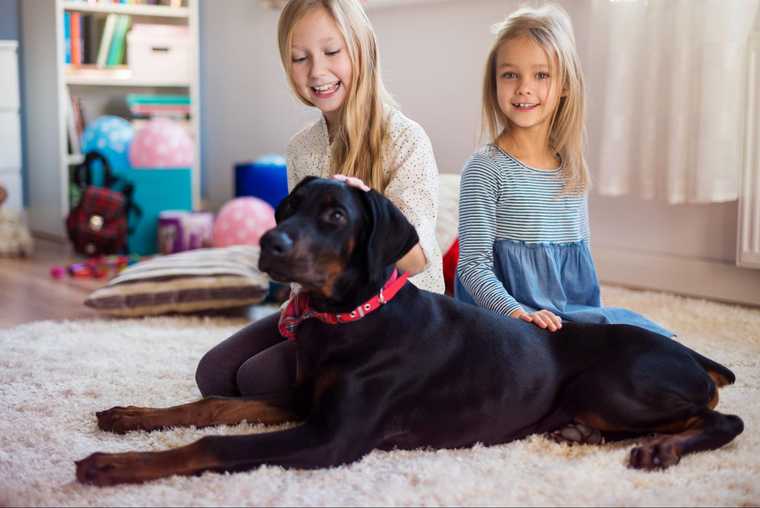
9. Fear of Car Rides
Though many dogs enjoy car rides, some develop negative associations with them that can even become a fear of phobia. It’s typically the result of past adverse events connected with rides. Thus, a dog can remember getting sick in a car or driving to a vet.
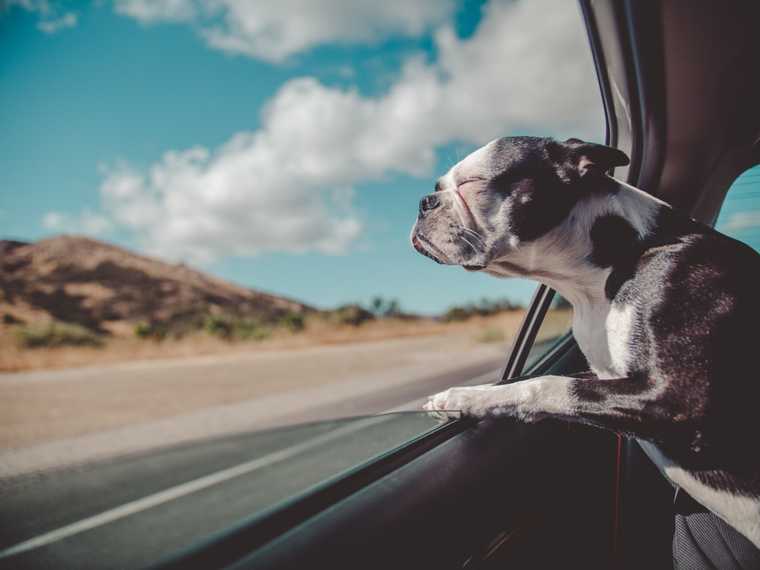
10. Fear of Unknown Cause
A dog may fear people, sounds, situations, places, unexpected movements, etc. It's known as idiopathic fear, and its origin is unknown.
This fear is more common in certain breeds, such as Border Collies, Bernese Mountain Dogs, Siberian Huskies, Great Pyrenees, and Poodles.

How to Help a Scared Dog?
Helping a dog deal with their fears is not quick, but it is possible. Your patience and consistency in treating the fear are a key to success. It’s also important to remember that fears should be addressed immediately to prevent them from developing into full-scale phobias.
How to Modify a Frightened Dog Behavior?
Behavior modification is the first step when your dog suffers from fear. These techniques are not instant cures but can demonstrate excellent results paired with drug therapy (if needed).
Behavior modification techniques include:
- Gradual desensitization to the stimulus (or counterconditioning)
This technique relies on gradually exposing and pairing the experience with positive things (food, toys, or any other thing the dog may like), slowly working up to increase the exposure.
- Educating the owner
It’s common for pet owners to reinforce undesired behavior without realizing they’re doing so. That’s why many dog owners will benefit from a veterinary behaviorist or a dog trainer’s consultation to help break harmful patterns of interaction.
- Basic obedience training
Teaching your dog basic commands helps improve their confidence level and can be helpful when redirecting your dog in a triggering environment. The same applies to mental stimulation: having success in activities that stimulate the brain can make them feel more confident.
- Careful planning of daily activities
One thing that’s true about persistent phobias is that pets display signals of distress when facing the same circumstances. It means you can plan what you will do in each situation. For example, if your dog is scared of thunder and you see a thunderstorm in the weather forecast, you can plan to minimize the triggers or use it as a training opportunity.
Using Medication to Help a Dog Overcome Fears
Applying behavior modification techniques is sufficient for many dogs to treat phobias they suffer from. Other dogs, unfortunately, may require extra medical assistance. Standard drug therapies used to help dogs fight fears are antianxiety drugs and room sprays with calming effects.
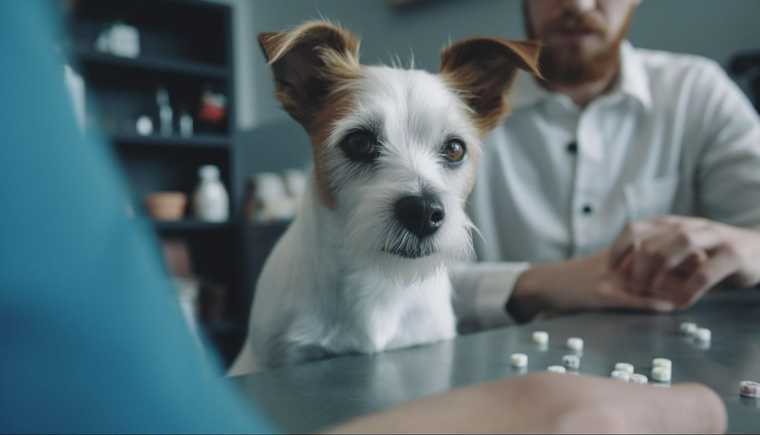
Remember, you should always consult your vet about possible medical solutions to fear-related issues before starting any drug therapy. The point of using medication for fearful dogs is to calm their anxiety, not to sedate them. That’s why the type of drugs and the dosage is a topic of individual discussion in each case.
Wrap Up
Seeing your dog scared, let alone suffering from a phobia, can overwhelm any dog owner. Fearful behaviors are common since they’re a part of regular dogs’ reactions to threatening stimuli. However, when you notice frequent signals of distress in your dog, you must act on them to prevent fears from growing into phobias.
To help your dog overcome fears, try using behavior modification techniques. They may include desensitization, obedience training, and redirecting of unwanted responses. Remember, with a gradual approach, patience, and professional assistance, you will manage to help your dog become more confident and enjoy a more relaxed lifestyle.

Passionate team dedicated to help pet owners raise safe and obedient dogs, fostering meaningful connections with their furry companions.

Certified dog trainer, exclusive positive reinforcement methods & tackling aggression problems.